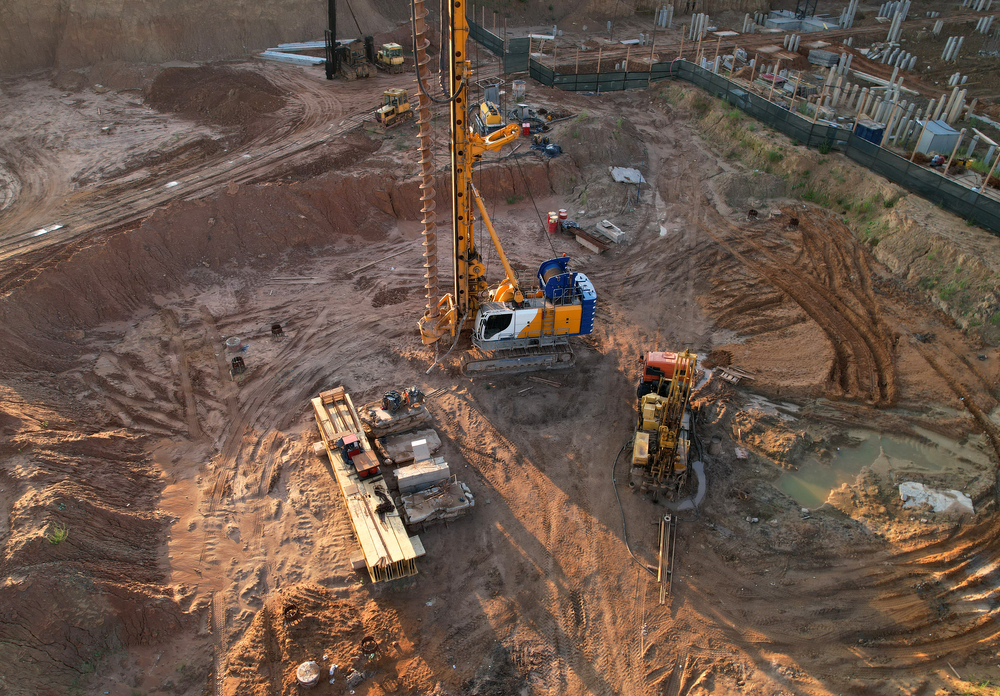The Of Geotheta
The Of Geotheta
Blog Article
Not known Incorrect Statements About Geotheta
Table of ContentsGeotheta Things To Know Before You Get This7 Simple Techniques For GeothetaGeotheta Things To Know Before You Get ThisAbout GeothetaHow Geotheta can Save You Time, Stress, and Money.

They carry out website investigations, accumulate examples, carry out lab examinations, and assess data to examine the viability of the ground for building jobs - Engineer of Record. Based on their searchings for, geotechnical designers give referrals for foundation design, incline stability, maintaining frameworks, and reduction of geotechnical dangers. They work together with various other experts, such as engineers, structural engineers, and building teams, to make sure that geotechnical factors to consider are incorporated right into the total project design and implementation
By evaluating the habits and residential properties of soil and rock, they can identify possible geotechnical hazards such as landslides, soil settlement, or slope instability. Their competence assists avoid failures or accidents that can jeopardize lives and building. Below are some detailed duties and responsibilities of a geotechnical designer: Site Investigation: Geotechnical designers conduct website investigations to gather information on subsurface conditions.
They translate the information to understand the buildings and actions of the dirt and rock, including their toughness, leaks in the structure, compaction characteristics, and groundwater conditions. Geotechnical Analysis and Style: Geotechnical engineers evaluate the information gathered during site investigations to assess the stability and suitability of the website for construction jobs. They do geotechnical computations and modeling to evaluate variables such as birthing ability, negotiation, incline security, lateral planet stress, and groundwater flow.
Geotheta Fundamentals Explained
Foundation Style: Geotechnical engineers play an essential role in making foundations that can securely support the designated structure. They analyze the dirt problems and lots demands to establish the appropriate foundation kind, such as shallow structures (e.g., grounds), deep structures (e.g (https://geotheta.blog.ss-blog.jp/2024-08-02?1722614750)., stacks), or specialized methods like dirt enhancement. They think about factors such as settlement restrictions, birthing capacity, and soil-structure communication to create optimum structure designs
They review building strategies, display site tasks, and perform field evaluations to verify that the layout recommendations are complied with. If unexpected geotechnical issues emerge, they examine the situation and supply referrals for remediation or adjustments to the design. Risk Analysis and Mitigation: Geotechnical designers evaluate geotechnical dangers and risks related to the job website, such as landslides, liquefaction, or dirt disintegration.

Collaboration and Communication: Geotechnical designers function carefully with other professionals involved in a task, such as architects, structural engineers, and construction teams. Reliable communication and cooperation are necessary to integrate geotechnical considerations into the total project layout and construction procedure. Geotechnical engineers provide technical know-how, response inquiries, and make certain that geotechnical needs are fulfilled.
An Unbiased View of Geotheta
Right here are some kinds of geotechnical engineers: Structure Engineer: Foundation engineers focus on developing and analyzing foundations for frameworks. They examine the soil problems, lots requirements, and site attributes to determine one of the most suitable structure type and design, such as superficial foundations, deep structures, or specialized techniques like pile structures.
They assess the factors influencing incline stability, such as dirt residential properties, groundwater problems, and incline geometry, and establish methods to stop incline failings and mitigate threats. Earthquake Engineer: Earthquake engineers concentrate on assessing and designing structures to withstand seismic pressures. They analyze the seismic threat of a site, evaluate soil liquefaction capacity, and create seismic layout standards to ensure the safety and security and durability of structures during quakes.
They perform area screening, collect examples, and analyze the gathered information to define the soil homes, geologic developments, and groundwater conditions at a website. Geotechnical Instrumentation Designer: Geotechnical instrumentation designers concentrate on monitoring and measuring the habits of soil, rock, and structures. They mount and preserve instrumentation systems that monitor aspects such as soil negotiation, groundwater levels, slope movements, and structural displacements to analyze efficiency and supply very early cautions of possible issues.
6 Easy Facts About Geotheta Described
They carry out examinations such as triaxial examinations, combination examinations, direct shear tests, and leaks in the structure examinations to gather data for geotechnical evaluation and layout. Geosynthetics Engineer: Geosynthetics designers focus on the layout and application of geosynthetic materials, such as geotextiles, geogrids, and geomembranes. They utilize these materials to enhance dirt stability, enhance slopes, provide water drainage solutions, and control disintegration.
They often tend to be investigative individuals, which implies they're intellectual, introspective, and investigative. Tailings Engineer They are interested, systematic, rational, analytical, and logical. Some of them are also social, implying they're kind, generous, cooperative, client, caring, handy, understanding, sensible, and pleasant - Consulting Engineer.
In the office setting, geotechnical engineers utilize specialized software program devices to do calculations, develop styles, and analyze information. They prepare reports, review task requirements, connect with customers and group members, and coordinate project tasks. The office setting offers a helpful environment for research, analysis, and partnership with various other specialists entailed in the job.
Unknown Facts About Geotheta
They frequently visit job websites to carry out website examinations, examine geotechnical conditions, and collect data for evaluation. These check outs include taking a trip to different places, in some cases in remote or challenging terrains. Geotechnical designers may carry out soil sampling, conduct examinations, and display building and construction tasks to make sure that the geotechnical facets of the task are being implemented properly.
Geotechnical designers also function in specialized geotechnical laboratories. Geotechnical lab designers work extensively in these settings, dealing with testing devices, operating tools, and tape-recording data.
Report this page